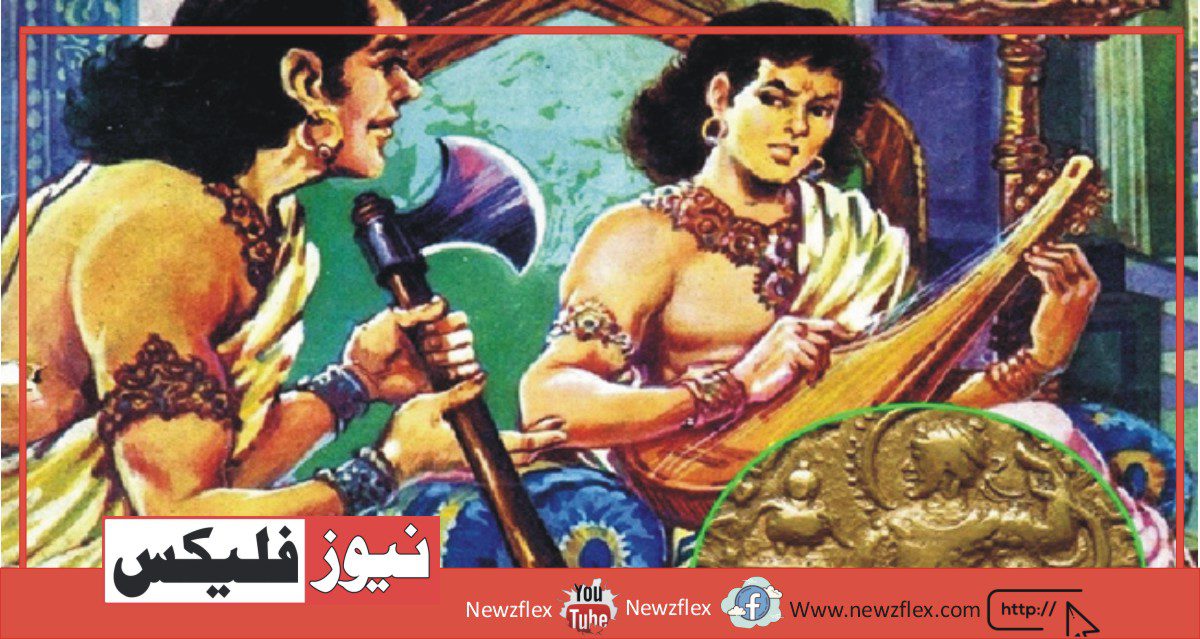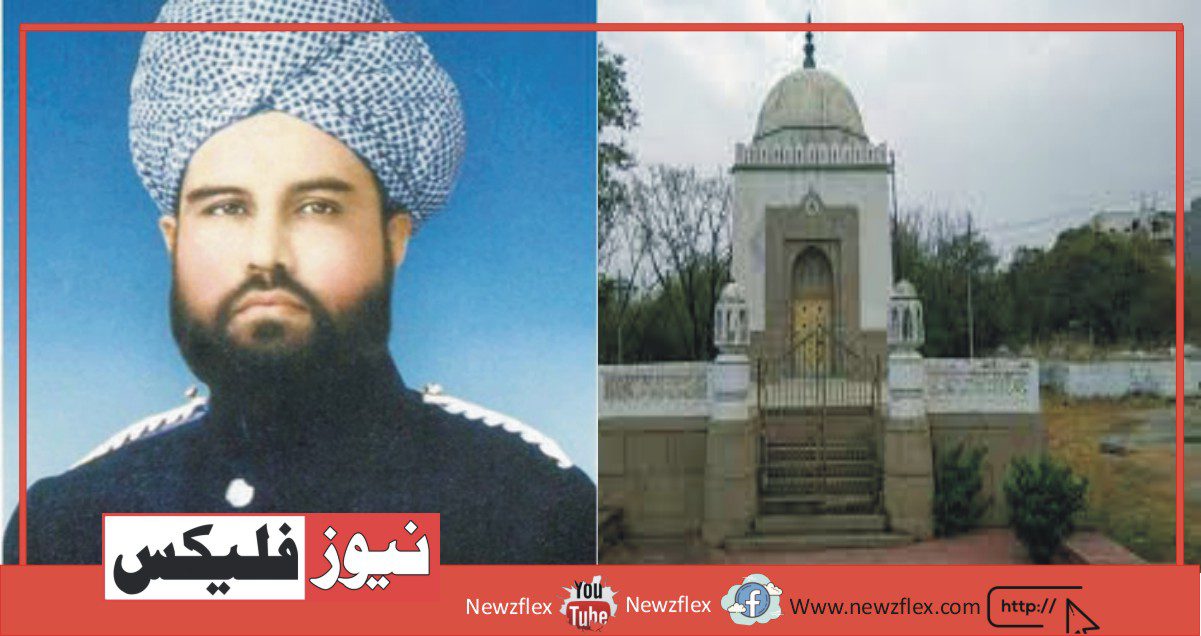
Sumundara Gupta
Samudragupta (reigned 335-380) was the second ruler of the Gupta Dynasty, who ushered in the Golden Age in India. He was a benevolent ruler, an excellent warrior, and a patron of the arts. Samudragupta, son of Chandragupta I, was perhaps the greatest king of the Gupta dynasty.
He took the Gupta dynasty from its insignificant position to its dizzy heights. For his marvellous achievements, he has been described as the Napoleon of India. Dr V.A. Smith remarks “Samudragupta, the second Gupta monarch was one of the most remarkable and accomplished kings of India’s history”.
Chandragupta, I selected Samudragupta as his successor in the presence of all his courtiers in the royal court. Therefore, Chandragupta-I blessed him, saying, “Protect you this Earth”. If Chandragupta-I and Kumardevi were the joint rulers, Samudragupta succeeded both of them. He was, in fact, proud of being the son of the daughter of the Lichchhav.
He ascended the throne about 335 A.D. The choice of Samudragupta as king was accepted with joyous satisfaction by the advisors. But those who were of equal birth and were rivals to the throne became ‘pale-faced’ with disappointment. So scholars conclude that there have been other sons of Chandragupta-I who aspired to the throne and thus, the accession of Samudragupta was disputed.
It’s said that the revolt of the other princes was headed by the eldest brother Kacha. But Samudragupta suppressed the revolt, killed Kacha, and ascended the throne. But other scholars say that Kacha was ready to seize the throne for a quick period during which he struck some coins and several other such coins bearing the name of Kacha are found. But other scholars don’t accept this view.
They believe that Samudragupta had another name Kacha, and therefore the coins bearing that name were of Samudragupta himself The coins of Kacha earn the epithet ‘Sarva- Rajochhetta’ which term can apply only to a good warrior and conqueror like Samudragupta. Allan says, “Kacha was the original name of the emperor and he took the name Samudragupta in allusion to his conquests”.
After the death of his father, his son Samudragupta began to rule the kingdom and didn’t rest until he conquered almost the full of India. His reigning period could also be described as a vast campaign. To start with, he attacked the neighbouring kingdoms of Shichchhatra (Rohilkhand) and Padmavati (in Central India).
He conquered the entire Bengal and some Kingdoms in Nepal and he made Assam pay him tribute. He absorbed some Tribal states just like the Malvas, the Yaudheyas, the Arjunayanas, the Abhiras, and therefore the Madura.
Samudragupta’s territories extended from the Himalayas in the north to the river Narbada in the south and from the Brahmaputra River in the east to the Yamuna River in the west. His greatest achievement can be described as the political unification of most of India or Aryavarta into a formidable power. He assumed the title of Maharajadhiraja (The King of the Kings).
Samudragupta extended his Kingdom in the west over Khandesh and Palghat. However, he preferred to keep up friendly terms with Vatakata in Central India. He performed Aashvamadha Yajna (Horse Sacrifice) after winning every big battle. This great warrior had a benevolent heart. He showed great nobility towards all those kings who were defeated. He gave various tribal states autonomy under his protection.
Knowing the invincible power of Samudragupta the frontier states came forward to submit themselves to him. Except for the vastness of his kingdom, Samudragupta received homage from a handful of foreign kings. The Kushan princes of the North-West ruled in peach beyond. In the Indus basin also, friendly relations were maintained with the King Mahendra of Ceylon who had built a splendid monastery at Bodh Gaya after obtaining the permission of Samudragupta.
Samudragupta was a man of remarkable abilities and unusually varied gifts – warrior, statesman, general, poet and musician, philanthropist, he was all in one. As a patron of arts and letters, he epitomized the spirit of his age. Coins and inscriptions of the Gupta period bear testimony to his “versatile talents and ‘ Indefatigable energy”.
Most certainly, Samudragupta is the father of the Gupta monetary system. He started maintaining seven different types of coins. They’re referred to as the quality Type, the Archer Type, the Battle Axe Type, the Aashvamedha Type, the Tiger Slayer Type, the King, and Queen Type, and also the Lyrist Type. They exhibit a fine quality of technical and sculptural finesse. He died in 380 A.D.
سمندر گپت
سمندر گپت (حکومت 335-380) گپتا خاندان کا دوسرا حکمران ہے جس نے ہندوستان میں سنہری دور کا آغاز کیا۔ وہ ایک مہربان حکمران، عظیم جنگجو اور فنون لطیفہ کا سرپرست تھا۔ چندر گپت اول کا بیٹا سمندر گپت شاید گپت خاندان کا سب سے بڑا بادشاہ تھا۔ اس نے گپتا خاندان کو اس کی غیر معمولی حیثیت سے اس کے چکر کی بلندیوں تک پہنچا دیا۔ ان کے شاندار کارناموں کے لیے انھیں ہندوستان کا نپولین کہا جاتا ہے۔ ڈاکٹر وی اے سمتھ نے ریمارکس دیے کہ ‘سمندرا گپت، دوسرا گپتا بادشاہ ہندوستان کی تاریخ کے سب سے قابل ذکر اور قابل بادشاہوں میں سے ایک تھا’۔
چندر گپت، نے شاہی دربار میں اپنے تمام درباریوں کی موجودگی میں سمندر گپت کو اپنا جانشین منتخب کیا۔ اس لیے چندرگپت اول نے اسے آشیرواد دیتے ہوئے کہا، ‘اس زمین کی حفاظت کرو’۔ اگر چندر گپت اول اور کمار دیوی مشترکہ حکمران تھے تو سمندر گپت ان دونوں کا جانشین ہوا۔ اسے درحقیقت لچھو کی بیٹی کا بیٹا ہونے پر فخر تھا۔
وہ تقریباً 335 عیسوی میں تخت پر بیٹھا، سمندر گپت کے بطور بادشاہ انتخاب کو مشیروں نے خوشی سے قبول کیا۔ لیکن وہ لوگ جو مساوی پیدائشی تھے اور تخت کے حریف تھے مایوسی کے ساتھ ’پیلا چہرہ‘ ہو گئے۔ چنانچہ علماء نے یہ نتیجہ اخذ کیا کہ چندر گپت اول کے دوسرے بیٹے بھی تھے جو تخت کے خواہشمند تھے اور اسی وجہ سے سمندر گپت کے الحاق پر اختلاف کیا گیا۔ کہا جاتا ہے کہ دوسرے شہزادوں کی بغاوت کی سربراہی سب سے بڑے بھائی کچا کے ہاتھ میں تھی۔ لیکن سمندر گپتا نے بغاوت کو کچل دیا، کچا کو قتل کر دیا اور تخت پر چڑھ گیا۔ لیکن بعض دوسرے علماء کا کہنا ہے کہ کچا مختصر مدت کے لیے تخت پر قبضہ کرنے میں کامیاب رہا جس کے دوران اس نے کچھ سکے مارے۔ اور ایسے کئی سکے ملے ہیں جن پر کچا کا نام ہے۔ لیکن دوسرے علماء اس قول کو قبول نہیں کرتے۔ ان کا ماننا ہے کہ سمندر گپت کا ایک اور نام کچا تھا، اور اس نام کے سکے خود سمندر گپتا کے تھے، کچے کے سکے ‘سروا-راجوچھیٹہ’ کے نام سے منسوب ہیں جو صرف سمندر گپت جیسے عظیم جنگجو اور فاتح پر لاگو ہو سکتا ہے۔ ایلن کا کہنا ہے کہ ‘کچا شہنشاہ کا اصل نام تھا اور اس نے اپنی فتوحات کی طرف اشارہ کرتے ہوئے سمندر گپت کا نام لیا’۔
اپنے والد کی موت کے بعد، اس کے بیٹے سمندر گپت نے سلطنت پر حکومت کرنا شروع کر دی اور اس وقت تک آرام نہیں کیا جب تک کہ اس نے تقریباً پورے ہندوستان کو فتح نہ کر لیا۔ اس کے دور حکومت کو ایک وسیع فوجی مہم کے طور پر بیان کیا جا سکتا ہے۔ شروع کرنے کے لیے، اس نے پڑوسی ریاستوں شیچھتر (روہیل کھنڈ) اور پدماوتی (وسطی ہندوستان میں) پر حملہ کیا۔ اس نے پورے بنگال کو فتح کیا، نیپال میں کچھ سلطنتیں اور اس نے آسام کو خراج تحسین پیش کیا۔ اس نے کچھ قبائلی ریاستوں کو جذب کیا جیسے مالواس، یودھیا، ارجنان، ابھراس اور مدورا۔
سمندر گپت کے علاقے شمال میں ہمالیہ سے لے کر جنوب میں دریائے نربدا تک اور مشرق میں دریائے برہم پترا سے لے کر مغرب میں دریائے یمنا تک پھیلے ہوئے تھے۔ ان کی سب سے بڑی کامیابی کو زیادہ تر ہندوستان یا آریاورت کو ایک زبردست طاقت میں سیاسی اتحاد کے طور پر بیان کیا جاسکتا ہے۔ اس نے مہارادھیراجا (بادشاہوں کا بادشاہ) کا لقب اختیار کیا۔
سمندر گپت نے اپنی سلطنت کو مغرب میں خاندیش اور پالگھاٹ تک پھیلا دیا۔ تاہم، اس نے وسطی ہندوستان میں واتکاتا کے ساتھ دوستانہ تعلقات برقرار رکھنے کو ترجیح دی۔ اس نے ہر بڑی جنگ جیتنے کے بعد آشومادھا یجنا (گھوڑے کی قربانی) کی۔ یہ عظیم جنگجو ایک نیک دل تھا۔ اس نے ان تمام بادشاہوں کے ساتھ بڑی شرافت کا مظاہرہ کیا جو شکست کھا گئے تھے۔ اس نے اپنی حفاظت میں مختلف قبائلی ریاستوں کو خود مختاری دی۔ سمندر گپت کی ناقابل تسخیر طاقت کو جان کر سرحدی ریاستیں اپنے آپ کو اس کے تابع کرنے کے لیے آگے آئیں۔ اپنی سلطنت کی وسعت کے علاوہ، سمندر گپت کو مٹھی بھر غیر ملکی بادشاہوں سے خراج عقیدت حاصل ہوا۔ شمال مغرب کے کشان شہزادے اس سے آگے آڑو میں حکومت کرتے تھے۔ سندھ طاس میں بھی سیلون کے بادشاہ مہیندر کے ساتھ دوستانہ تعلقات برقرار تھے جنہوں نے سمندر گپت کی اجازت حاصل کرنے کے بعد بودھ گیا میں ایک شاندار خانقاہ تعمیر کی تھی۔
سمندر گپت ایک غیر معمولی صلاحیتوں اور غیر معمولی طور پر متنوع تحائف کا آدمی تھا – جنگجو، سیاستدان، جنرل، شاعر اور موسیقار، انسان دوست، وہ سب ایک تھے۔ فنون اور خطوط کے سرپرست کے طور پر، اس نے اپنی عمر کی روح کا مظہر کیا۔ گپتا دور کے سکے اور نوشتہ ان کی ‘ورسٹائل صلاحیتوں اور ‘ناقابل تسخیر توانائی’ کی گواہی دیتے ہیں۔
یقینی طور پر، سمندر گپت گپتا مالیاتی نظام کا باپ ہے۔ اس نے سات مختلف قسم کے سکوں کو برقرار رکھنا شروع کیا۔ وہ معیاری قسم، آرچر کی قسم، جنگ کلہاڑی کی قسم، آشوامیدھا کی قسم، ٹائیگر سلیئر ٹائپ، کنگ، اور کوئین ٹائپ، اور گیت نگار کی قسم کے نام سے مشہور ہیں۔ وہ تکنیکی اور مجسمہ سازی کے عمدہ معیار کی نمائش کرتے ہیں۔ ان کا انتقال 380ء میں ہوا۔








